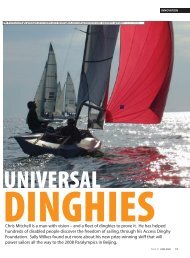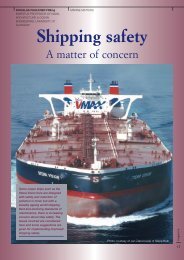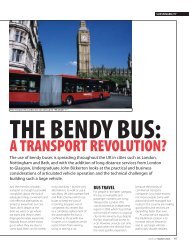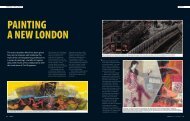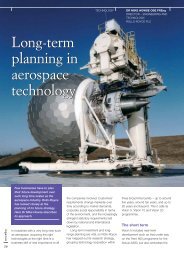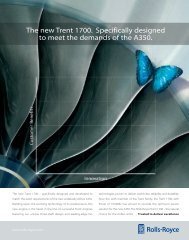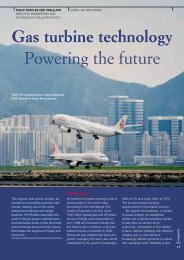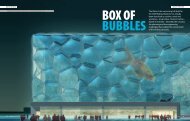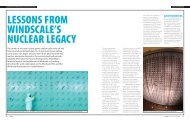[322/03] Francke - Ingenia
[322/03] Francke - Ingenia
[322/03] Francke - Ingenia
You also want an ePaper? Increase the reach of your titles
YUMPU automatically turns print PDFs into web optimized ePapers that Google loves.
INFRASTRUCTURE<br />
Figure 2: The route of the Øresund Bridge<br />
ingenia<br />
The skill with which the contractors<br />
successfully planned and executed the<br />
construction of the tunnel, the bridge<br />
and the major dredging works can<br />
largely be ascribed to the Design-and-<br />
Construct concept which forms a part<br />
of all the major contracts. Optimum use<br />
of prefabrication also played a key role.<br />
As the Design-and-Construct concept<br />
lays down precise functional<br />
requirements for the whole project,<br />
contractors are responsible for the<br />
detailed design as well as for the<br />
construction work.<br />
Rigorous environmental requirements<br />
were in force throughout the<br />
construction period, governing both the<br />
construction of the link and the impact<br />
of the completed link on the<br />
surrounding environment. As the Danish<br />
and Swedish governments had<br />
stipulated that the link must not block<br />
the water flow through Øresund, careful<br />
trimming of the link’s design reduced<br />
the calculated blocking effect from 2.3<br />
per cent of the water flow to 0.5 per<br />
cent prior to final adjustment.<br />
Compensation dredging in and around<br />
the alignment further reduced the<br />
blocking effect.<br />
Dredging and reclamation<br />
The dredging and reclamation contract<br />
included the initial construction works<br />
for the fixed link which began in August<br />
1995. Over four years a total of 7.5<br />
million cubic metres of (mainly) seabed<br />
material was dredged, two thirds in<br />
Danish waters and one third in Swedish<br />
waters. The seabed consists of gravel<br />
and stone, clay till and limestone with<br />
flint layers.<br />
Dredging was carried out by a<br />
number of dredgers, traditional bucket<br />
dredgers as well as a specialised<br />
cutter/suction dredger for the tunnel<br />
trench.<br />
The objective was for the<br />
completed link to have no net effect<br />
on the water flow and on the<br />
movement of salt and dissolved<br />
oxygen through Øresund to the Baltic<br />
Sea. Consequently the size and shape<br />
of the peninsula and the island were<br />
optimised to reduce the blocking of<br />
the water flow through Øresund.<br />
Further reduction to zero blocking was<br />
achieved by compensation dredging.<br />
All dredged seabed material was<br />
reused in the reclaimed areas which<br />
cut sediment spill to a minimum and,<br />
in addition, reduced the need for<br />
dumping sites as well as for import of<br />
sand and gravel.<br />
The dredging works included:<br />
● Work harbours and access channels<br />
at the artificial island and the artificial<br />
peninsula<br />
24


![[322/03] Francke - Ingenia](https://img.yumpu.com/23411337/2/500x640/322-03-francke-ingenia.jpg)
